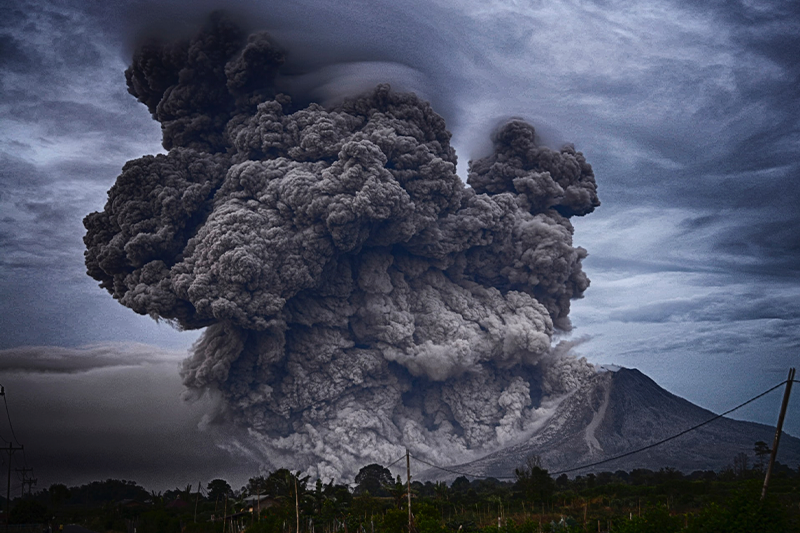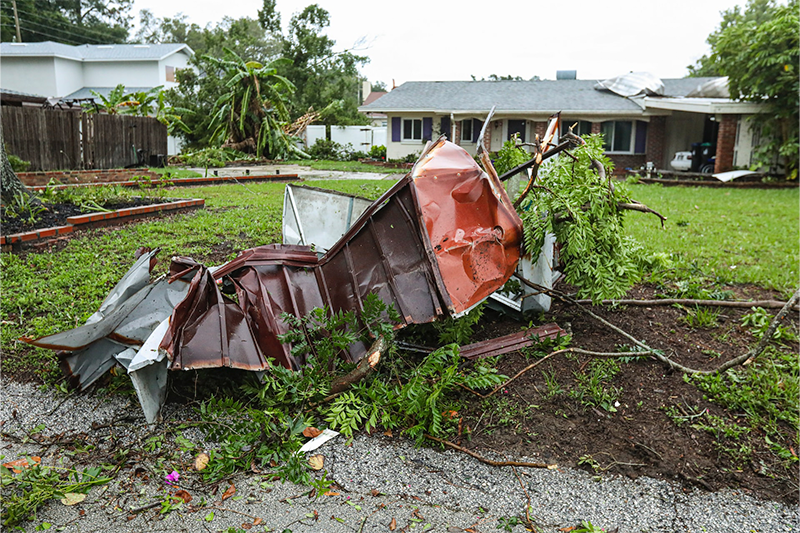
News you can use
My thoughts on the NOAA Billion-Dollar Weather And Climate Disasters annual report. To provide news, you can use the National Oceanic and Atmospheric Administration’s (NOAA) report released in early January 2023. The report said that eighteen disasters topped $1 billion in cost ranging from Winter Storm Elliot (Buffalo, NY) to the West’s drought and heat waves. Overall, in 2022 the US experienced a third more of this level of an event than in 1980. For practitioners, our companies are at increased risk from various hazards.
And these severe weather crises not only interrupt our operations but drain our human capital and supportive resources. There’s every indication that this trend is increasing. NOAA went as far as engaging experts to identify reporting bias. The result was learning the trend was skewed toward underreporting. So, it’s our job to consider more ways to mitigate damage effectively and increase organizational resilience.

There's no time to waste
With increased corporate concern about the environment and commitment to be responsible global citizens, now is the time to evaluate your program. I noted this in my remarks to the BCI for The Role of Business Continuity Managers in Climate Risk. “In my experience, it’s impacting us most through the increasingly severe weather and frequency of impactful events. The leadership of organizations is also increasingly sensitive to climate risks, so it changes how they interact with employees and customers. Everyone is trying to increase their green footprint and reduce adverse environmental effects while maintaining proper operations and services”. (-source, BCI’s research paper, August 2022).
For most businesses, impacts from natural disasters remain the most significant risk. Interestingly, most events topping a billion dollars occurred in the West, Midwest, and Southeastern United States. Of course, this does not mean the Eastern Seaboard was unscathed. We certainly suffered from Hurricane Sandy’s wrath in 2012. The Northwest suffered from heat waves, floods, and droughts. However, it is interesting to note that hazard types expected to be impactful in these regions are devastating. So, these disasters occur where we expect them versus an unexpected event wreaking havoc on an unsuspecting population. Regardless, it speaks to the increased vigilance and effort needed on our part to support a resilience posture internally.

Resilience is not a panacea; it's a tool.
Understandably, an organization that embraces resilience is not immune to unplanned events. It will also sustain damage from natural disasters. As I wrote in my recent Disaster Forecast For 2023 post, these events continue to rise in intensity. Additionally, cyber-attacks remain a threat, and the effects of the worldwide economic downturn will negatively influence near-term business decisions.
As a resilience professional, if you do not continue to lead in the traditional area of preparedness for natural disasters, your organization will experience a hit to its bottom line. Swiss Re reported that severe weather caused $260 billion in losses last year. Although not as sexy as cyber or wide-ranging as COVID, Mother Nature’s catastrophes continue to drive down profits due to outages in serving customers, along with employee, power, or network downtime. And, somewhere down the line, this leads to gain loss and cost-cutting. Yet, resilience is a fantastic framework to lessen these adverse outcomes.

Lions and tigers and bears, oh my!
The line “Lions and tigers and bears, oh my!” comes from the 1939 Wizard of Oz film. It signifies apprehension and fear of likely threats. As resilience professionals, we are uniquely positioned to simultaneously ask people to consider crises while consulting with them on alleviating negative impacts. Even more than that, through resilience, we coach organizations to build flexibility and that “bounce back” ability that enables positive survivorship. NOAA Billion-Dollar Weather and Climate Disasters report provide an in-depth understanding of the threats and increased risk of severe weather event.
It’s not an easy feat! In Recovery And Resilience, I shared how you can develop a recovery blueprint. Additionally, by engaging in Resilience Program Design, you help the business to implement a framework designed for and by them. To my mind, the greatest attribute of business resilience is that it empowers the organization’s employees to a higher level of emergency preparedness. It also instills a culture of measured, thoughtful, and educated crisis response. By this, I mean that your greatest asset is a company that understands it will get knocked down by natural disasters but is ready to thrive through difficult times.

Resilience is a mindset, not a project.
We can’t stop disaster from happening. That’s a given. And all of the data points to an uptick in catastrophe perils. The best gift to your organization is continued engagement in preparedness, response, and activities that strengthen overall plasticity. I spoke in the past about What Resilience Is And Isn’t. However, building muscle memory and creating a culture of readiness takes continuous effort.
I am always leary of companies that approach our work with a project management methodology. Of course, I see the value of that discipline in cutting costs, increasing efficiencies, and striving for competitive advantage. NOAA Billion-Dollar Weather And Climate Disasters reports are significant because they provide data and leverage to influence business resilience. It’s a lever to share why readiness for severe weather events continues to be vital to maintain a healthy bottom line. Building a resilience culture increases people’s ability to deal with and respond effectively to natural calamities.

Risk intelligence supports resilience.
So, what do you do with this information? As I suggested, the knowledge gained from the NOAA billion-dollar weather and climate disaster data should be used to strengthen your program. Use it to share the growing risk posed by natural disasters. Leadership will appreciate the danger posed by severe weather and prudence in continuing to exercise, plan, and collaborate across business units. Simulating crisis response and incorporating lessons learned remain the most potent tools for preparedness.
Simultaneously, your role is to foster an attitude of resilience that leads with a company’s value and leverages its cultural strengths. Actionable intelligence, such as NOAA’s report, reinforces the investment in your work. The pandemic notwithstanding, my experience is that natural disasters are the greatest menace to continuity. However, understanding the scope and scale of the threat is our advantage in preparing for it adequately. Hopefully, this blog helps you to add another source of data to strengthen your program and advance resilience.
Let me know if you agree in the comment section below. Please share any additional sources of risk intelligence you find helpful so that others can benefit. Finally, if you found this blog insightful, please share it with others.
Did you know?
Disaster Empire blogs contain embedded links to source materials, articles of interest, videos, books, and training I recommend. Just click on the blue embedded link to access the resource.
